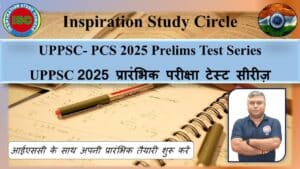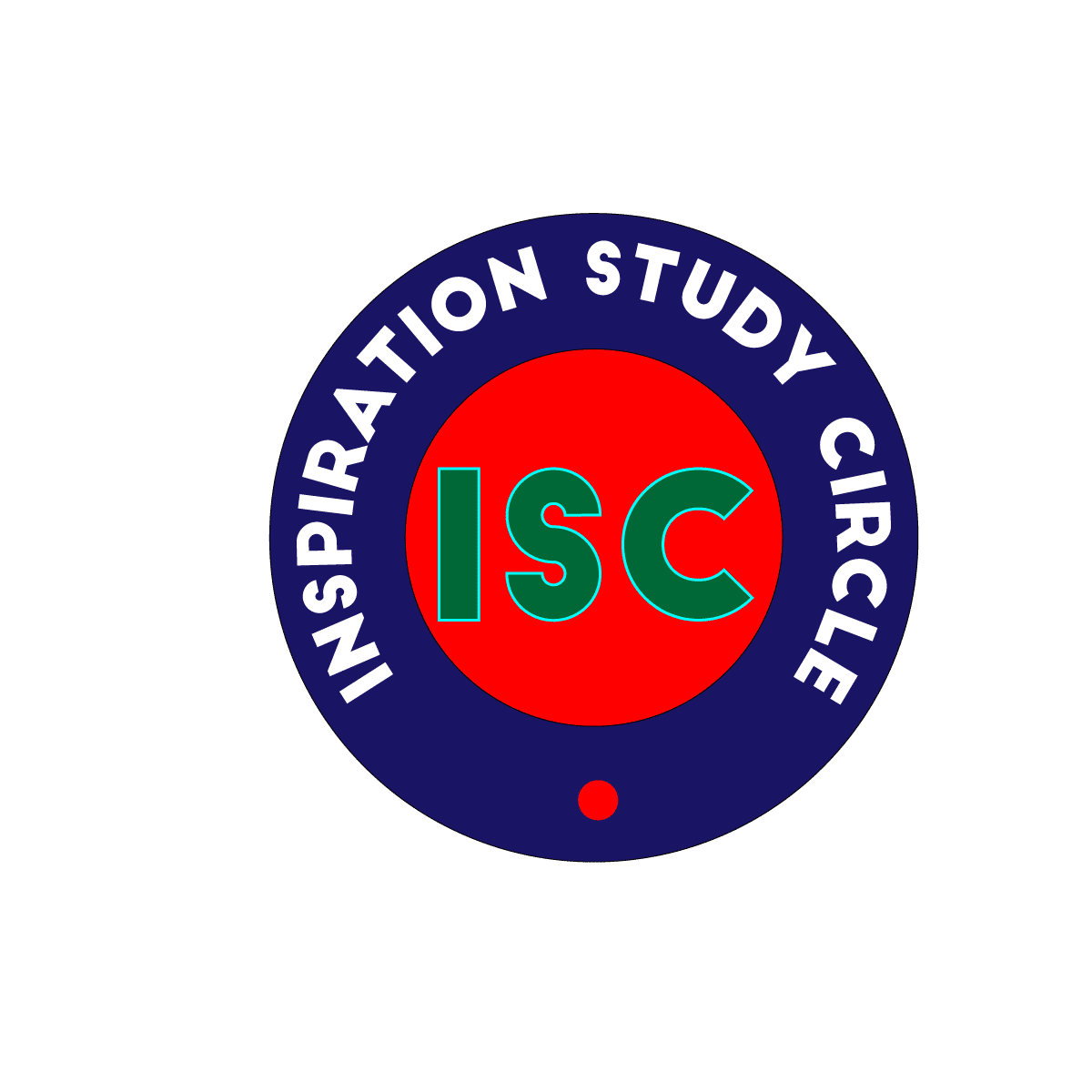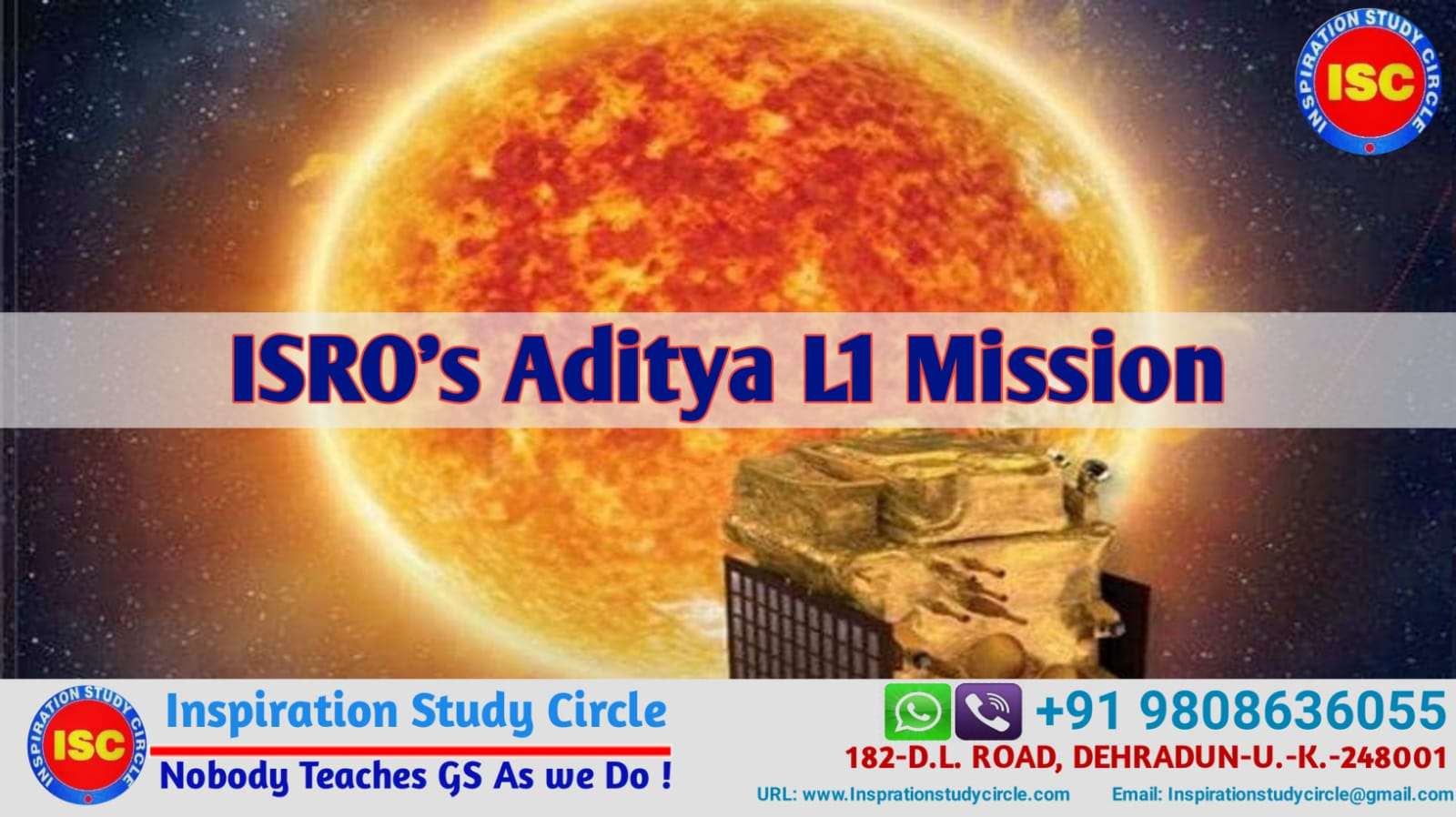ISRO’s Aditya L1 Mission
IAS Classroom Program 2024
ISRO’s Aditya L1-Prospects for Space Mission
Table of Contents
Aditya L1 is a coronagraphic spacecraft designed and developed by the Indian Space Research Organization (ISRO) and several other Indian research institutions to study the solar atmosphere. This is the first Indian mission dedicated to observing the Sun. Nigar Shaji is the project director. Aditya-L1 was launched aboard PSLV C57 on September 2, 2023, ten days after ISRO’s Chandrayaan-3 lunar mission successfully landed. About an hour later, it reached its intended orbit and lifted off from the fourth stage at 12:57 IST. It is expected to reach the designated orbit on L1 about 127 days after launch.
Mission Details
Aditya-L1 is a satellite dedicated to the comprehensive study of the Sun. It has Seven distinct payloads developed indigenously. Five by ISRO and two by Indian academic institutes in collaboration with ISRO.
The spacecraft shall be placed in a halo orbit around the Lagrange point 1 (L1) of the Sun-Earth system, which is about 1.5 million km from the Earth. A satellite placed in the halo orbit around the L1 point has the major advantage of continuously viewing the Sun without any occultation/eclipses. This will provide a greater advantage in observing solar activities and their effect on space weather in real-time. The spacecraft carries seven payloads to observe the photosphere, chromosphere, and the outermost layers of the Sun (the corona) using electromagnetic particle, and magnetic field detectors. Using the special vantage point L1, four payloads directly view the Sun and the remaining three payloads carry out in-situ studies of particles and fields at the Lagrange point L1, thus providing important scientific studies of the propagator effect of solar dynamics in the interplanetary medium.
Aditya-L1 will provide observations of the sun’s photosphere, chromosphere, and corona. Its scientific payloads must be placed outside the interference from the Earth’s magnetic field and hence could not have been useful in the low Earth orbit as proposed in the original Aditya mission concept.
Quick Facts: Aditya-L1 will stay approximately 1.5 million km away from Earth, directed towards the Sun, which is about 1% of the Earth-Sun distance. The Sun is a giant sphere of gas and Aditya-L1 would study the outer atmosphere of the Sun. Aditya-L1 will neither land on the Sun nor approach the Sun any closer.
Major Science Objectives of Aditya L1
- Study of Solar upper atmospheric (chromosphere and corona) dynamics.
- Study of chromospheric and coronal heating, physics of the partially ionized plasma, initiation of the coronal mass ejections, and flares
- Observe the in-situ particle and plasma environment providing data for the study of particle dynamics from the Sun.
- Physics of solar corona and its heating mechanism.
- Diagnostics of the coronal and coronal loops plasma: Temperature, velocity, and density.
- Development, dynamics, and origin of CMEs.
- Identify the sequence of processes that occur at multiple layers (chromosphere, base, and extended corona) which eventually leads to solar eruptive events.
- Magnetic field topology and magnetic field measurements in the solar corona.
- Drivers for space weather (origin, composition, and dynamics of solar wind.
History and Overview
Aditya in Sanskrit means the Sun. L1 here refers to Lagrange Point 1 of the Sun-Earth system. For common understanding, L1 is a location in space where the gravitational forces of two celestial bodies, such as the Sun and Earth, are in equilibrium. This allows an object placed there to remain relatively stable concerning both celestial bodies.
Aditya was conceptualized in January 2008 by the Aditya Advisory Committee on Space Sciences (ADCOS). It was originally envisioned as a small 400 kg satellite in low Earth Orbit (800 km) to study the Solar Corona. A trial budget of €3 million has been allocated for the 2016-2017 financial year. The mission has since been extended to become a solar environmental and space observatory to be placed at the L1 Lagrange point, thus the mission was named “Aditya-L1”.
One of the major unsolved problems in solar physics is coronal heating. The Sun’s upper atmosphere is 1,000,000 K (1,000,000 °C; 1,800,000 °F), and the lower atmosphere is 6,000 K (5,730 °C; 10,340 °F). Furthermore, how solar radiation affects the dynamics of the Earth’s atmosphere on a short and long scale is not well understood. The mission will take simultaneous images of different layers of the Sun’s atmosphere, showing how energy is transferred from one layer to another. Thus, the Aditya-L1 mission will provide a comprehensive understanding of the Sun’s dynamic processes and solve some of the most important problems in solar physics and Heliophysics
Trajectory and Placement
Following its scheduled launch on September 2, 2023, Aditya-L1 stays Earth-bound orbits for 16 days, during which it undergoes 5 maneuvers to gain the necessary velocity for its journey. Subsequently, Aditya-L1 undergoes a Trans-Lagrangian1 insertion maneuver, marking the beginning of its 110-day trajectory to the destination around the L1 Lagrange point. Upon arrival at the L1 point, another maneuver binds Aditya-L1 to an orbit around L1, a balanced gravitational location between the Earth and the Sun. The satellite spends its whole mission life orbiting around L1 in an irregularly shaped orbit in a plane roughly perpendicular to the line joining the Earth and the Sun.
The strategic placement at the L1 Lagrange point ensures that Aditya-L1 can maintain a constant, uninterrupted view of the Sun. This location also allows the satellite to access solar radiation and magnetic storms before they are influenced by Earth’s magnetic field and atmosphere. Additionally, the L1 point’s gravitational stability minimizes the need for frequent orbital maintenance efforts, optimizing the satellite’s operational efficiency.
Payloads of Aditya L1
The Aditya-L1 instrument is designed to observe the solar atmosphere, especially the chromosphere and corona. In-situ equipment will monitor the local environment at L1. There are seven payloads on board, four for remote sensing of the Sun and three for in situ monitoring. Payloads are developed by various laboratories across the country in close collaboration with various ISRO centers.
Type | Sl.No | Payload | Capability | Laboratories |
Remote Sensing Payloads | 1 | Visible Emission Line Coronagraph (VELC) | Corona Imaging and Spectroscopy | |
2 | Solar Ultraviolet Imaging Telescope (SUIT) | Photosphere and chromosphere imaging-narrow and broadband | ||
3 | Solar Low Energy X-ray Spectrometer (SoLEXS) | Soft X-ray spectrometer: Sun-as-a-star observation | ||
4 | High Energy L1 Orbiting X-ray Spectrometer(HEL1OS) | Hard X-ray spectrometer: Sun-as-a-star observation | ||
In-situ Payloads | 5 | Aditya Solar Wind Particle Experiment (ASPEX) | Solar wind and Particle analyzer: Protons and Heavier ions with directions | |
6 | Plasma Analyser Package For Aditya (PAPA) | Solar wind and Particle Analyzer: Electrons and Heavier Ions with directions | Space Physics Laboratory, Vikram Sarabhai Space Centre, Thiruvananthapuram | |
7 | Advanced Tri-axial High-Resolution Digital Magnetometers | In-situ magnetic field (Bx, By and Bz). |
Visible Emission Line coronagraph (VELC): Visible Emission Line Coronagraph (VELC) is a key instrument in India’s Aditya-L1 space solar mission. VELC is an internal occultation reflective coronagraph designed to meet specific surveillance needs. This device allows for high-resolution imaging of the Sun’s corona, simultaneous observation in three modes (Imaging, Spectroscopy, and Spectro-polarimetry), and even uses artificial intelligence to help detect coronal mass ejections (CMEs).
Solar Ultraviolet Imaging Telescope (SUIT): SUIT is an ultraviolet imaging telescope designed to study solar spectral radiation in the ultraviolet range using narrow- and broadband spectral filters in the 200-400 nm range, with the hope of better understanding the relationship between solar activity and the dynamics of the Earth’s atmosphere. SUIT covers the sun’s atmosphere simultaneously from the lower photosphere to the upper chromosphere. The instrument was developed by the Center for Astronomy and Astrophysics at the University of Internazionale (lUCAA), in collaboration with ISRO.
SoLEXS is an X-ray spectrometer designed to continuously measure the solar soft X-ray flux from the Sun-Earth Lagrangian L1 point. These measurements can be used to better understand the properties of the Sun’s corona, specifically why the corona is so hot. SoLEXS will observe solar flares and, together with data from VELC, help study the complex thermal properties of the Sun’s outer layers.
Significance of Studying the Sun
Understanding Our Solar System: The Sun is the center of our solar system, and its properties greatly affect the movement of other celestial bodies. Studying the sun improves our understanding of the dynamics of our solar environmen.
Predicting space weather: Solar activity such as solar flares and coronal mass ejections can affect Earth’s space environment.
Understanding this phenomenon is essential for predicting and mitigating potential disruptions to communication, navigation, and power grid systems.
Advances in solar physics: The study of the sun’s complex motion, magnetic field, heating mechanism, and plasma dynamics contributed to the development of basic physics and astrophysics.
Renewable Energy Research: The Sun is a natural fusion reactor. Insights from the study of nuclear and nuclear reactions can inform our pursuit of clean and sustainable fusion energy on Earth. Improved Satellite Operations: Solar radiation and the solar wind affect the performance of satellites and spacecraft. Understanding these effects now allows us to improve the design and performance of spacecraft
Disclaimer: The article is based on the following sources of information: Press Releases and Information Drafts from the Government of India on mygov. in and Wikiped
Recent Post

UPSC Mains 2025 Analysis and Overview
UPSC Mains 2025 Analysis and Overview Table of Contents The UPSC Mains 2025 analysis indicated a paper that was a balance of static and analytical questions,

Last Minute Preparation Tips for UP PCS Prelims 2025
Last Minute Preparation Tips for UP PCS Prelims 2025 Table of Contents The Uttar Pradesh Public Service Commission conducts a series of annual examinations for

Explained: Next-Gen GST Overhaul and Reforms
Explained: Next-Gen GST Overhaul and Reforms Table of Contents The GST Council in its 56th meeting on 3rd September, 2025, made the recommendations relating to changes in

Explained: Vikram-32 Chip
Explained: Vikram-32 Chip Table of Contents Union Information and Broadcasting Minister Ashwini Vaishnaw recently unveiled India’s first indigenously developed 32-bit processor called VIKRAM-32. The minister presented the

UPSC Prelims 2026 Test Series
UPSC Prelims 2026 Test Series Table of Contents Inspiration Study CircleUPSC Prelims 2026 Test Series The Union Public Service Commission (UPSC) is set to conduct

UPPSC- PCS 2025 Prelims Test Series
UPPSC- PCS 2025 Prelims Test Series UPPSC 2025 प्रारंभिक परीक्षा टेस्ट सीरीज़ उत्तर प्रदेश लोक सिविल सेवा 12 अक्टूबर 2025 को अपनी उच्च और संयुक्त

